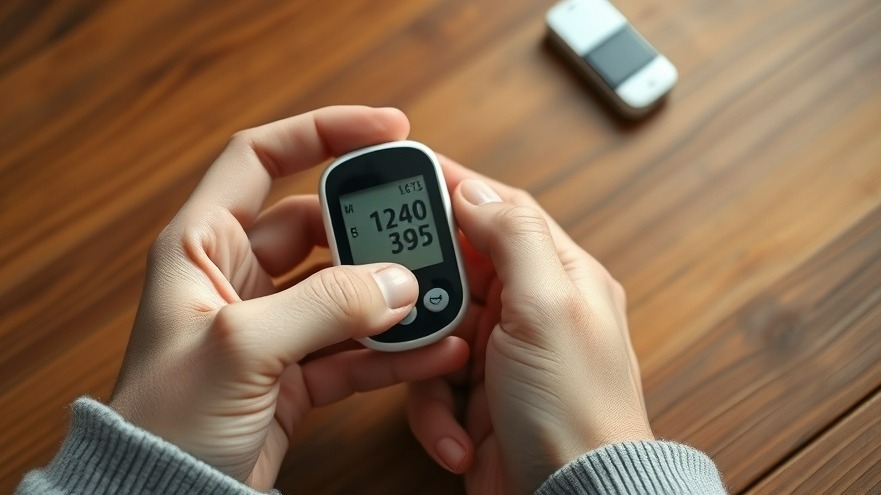
Revolutionizing Diabetes Management with Continuous Glucose Monitors
A recent study from the University of Colorado Anschutz Medical Campus has shown that primary care clinics can effectively incorporate continuous glucose monitors (CGMs) into diabetes management for their patients. With CGMs tracking blood sugar levels in real-time, patients can better understand the impact of their lifestyle on their diabetes, improving their overall health and quality of life.
A Dual Approach: Self-Guided vs. Virtual Implementation
The study involved 76 primary care practices across Colorado exploring two different avenues to initiate CGM usage among patients. The first approach was a self-guided option, utilizing educational resources developed by the American Academy of Family Physicians, while the second involved a virtual CGM initiation service run by a team of primary care-based healthcare professionals. This modern dual method reflects the dynamic changes in healthcare delivery, particularly how technology can facilitate better patient care.
The Role of In-House Specialists and Access to Care
Interestingly, practices that had in-house diabetes care specialists opted more frequently for the self-guided option, whereas those lacking such specialists leaned towards the virtual service. This highlights a crucial aspect of patient care: the availability of specialized resources significantly influences how services are deployed in practice settings. With many patients facing barriers to specialist access due to geographic location, insurance limitations, or long wait times, primary care's proactive role in diabetes management could bridge significant gaps in care.
Continuous Glucose Monitors: How They Foster Patient Empowerment
CGMs offer a transformational advantage by continuously tracking blood sugar levels without the need for invasive finger-prick checks. This advancement not only enhances patient comfort but also empowers patients to respond to real-time data regarding their glucose levels in relation to food intake, exercise, and stress. The immediate feedback from CGMs allows individuals to make informed decisions that can lead to improved health outcomes.
The Path Ahead: Increasing Adoption of CGMs in Primary Care
Despite the clear benefits that CGMs bring, astonishingly, fewer than half of U.S. primary care doctors have ever prescribed one. This indicates a significant opportunity for growth within the field of diabetes care. As Tamara Oser, MD, senior author of the study, notes, both methods examined in their research effectively empowered clinics, including those without in-house specialists, to offer CGMs, showcasing the potential for remote health services. Addressing this adoption gap is crucial not only for patient care but for the evolution of primary healthcare practices as they adapt to contemporary demands.
Innovative Strategies and Technology Integration in Healthcare
For concierge health practitioners and those focused on enhancing patient care, this study serves as a wake-up call to integrate technology into practice. Utilizing CGMs is not solely about monitoring glucose levels but also about embracing a holistic approach to diabetes management that prioritizes patient engagement and education. The study's findings encourage practitioners to explore innovative partnerships, such as collaborations with tech companies that specialize in health monitoring devices.
Final Thoughts: Practical Insights for Healthcare Providers
As primary care continues to adapt to the changing landscape, professionals must embrace tools like CGMs that will ultimately lead to better patient outcomes. By being proactive in adopting technology that connects patients with their health data, healthcare providers can significantly improve care delivery and patient satisfaction. In doing so, they also position themselves favorably within the evolving healthcare market, providing forward-thinking, tech-enhanced solutions.
Embracing CGMs today can make a significant difference in the lives of patients with diabetes, particularly those unable to access specialized care services. In light of these findings, healthcare practitioners are urged to consider how they can implement similar initiatives in their practice. By doing this, they have the power to transform diabetes care and enhance the overall patient experience.
 Add Row
Add Row  Add
Add 






Write A Comment